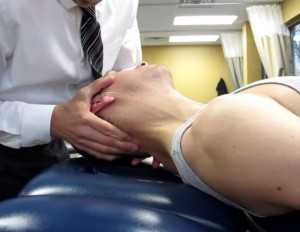Disclaimer: This website provides health information for educational purposes only and is not a substitute for professional medical advice, diagnosis, or treatment. Always seek the guidance of a qualified healthcare provider with any questions you may have.
 A car accident is the culprit behind whiplash – at least that’s what most people think. This, however, isn’t always the case. The truth is that any form of impact may cause neck strain. When there’s enough force to cause your neck to jerk forward and then backward, there’s a chance to experience the condition.
A car accident is the culprit behind whiplash – at least that’s what most people think. This, however, isn’t always the case. The truth is that any form of impact may cause neck strain. When there’s enough force to cause your neck to jerk forward and then backward, there’s a chance to experience the condition.
Chiropractors explain that this happens when the impact alters the shape of your spine. By default, the spine is C-shaped, but any impact may force it to become S-shaped. Once this happens, the pain of neck strain kicks in. In severe cases, the pain may seem unbearable.
Fortunately, there are ways to deal with the pain and address the strain.
Medication
Non-steroidal anti-inflammatory drugs (NSAIDs) and analgesics are your two options for whiplash. Paracetamol, for instance, is useful for mild pain. For more severe cases, your doctor would likely prescribe a more potent painkiller like codeine. In the case of NSAIDs, ibuprofen can help with the inflammation and pain. In any case, it’s important to consult your doctor first before taking any of these medications.
Physiotherapy
The physicians at The Utah Whiplash Group say that physiotherapy may help deal with the pain. Simple neck exercises can speed up the recovery process. Despite the stinging pain, keeping your neck mobile would help the condition to heal faster. Of course, therapists have other treatments and physical techniques at their disposal. For severe cases, longer periods of treatment may be necessary.
Self-care
You can also fast-track the recovery process through your own efforts. Maintaining good posture, for instance, reduces the stiffness in your neck. Using a supportive pillow would also ease the pain while you sleep. Lastly, you can try different controlled exercises similar to yoga poses to correct your posture and improve your strength.
Do note, however, that you should always consult your doctor before practicing self-care.
Whiplash may be painful, but it is something you can address in different ways.




